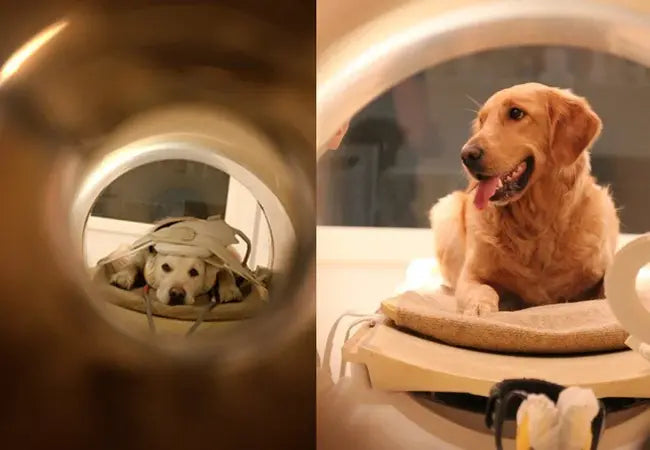Dog CT Scans 2025: Complete Vet Guide 🩺🐾

In this article
Dog CT Scans 2025: Complete Vet Guide 🩺🐾
By Dr. Duncan Houston BVSc
Hello, I’m Dr Duncan Houston BVSc, veterinarian and founder of Ask A Vet. CT scanning—computed tomography—is a powerful diagnostic tool used to get detailed cross‑sectional images of your dog’s internal anatomy. Whether investigating complex fractures, tumors, inner‑ear disease, or sinus issues, a CT scan can offer clarity where X‑rays and ultrasounds fall short. In this comprehensive 2025 guide, we’ll explore indications, how it’s done, benefits, risks, cost, preparation, and alternatives—all with support from Ask A Vet telehealth tools and tracking. Let’s dive in! 🐶🔬
1. 🧠 What Is a CT Scan?
A CT scan uses multiple X‑ray “slices” compiled by a computer to produce detailed internal images, similar to flipping through slices of bread to visualize a loaf. These scans are ideal for imaging bones, internal organs, sinuses, inner ear, spine and more.
2. 🔎 Why & When Is a CT Scan Needed?
- Clear, detailed imaging: Ideal for tumors, nasal/sinus disease, ear infections, complex fractures and spinal injury.
- Surgical planning: Provides 3D reconstruction for precise pre‑op engagement.
- Trauma evaluation: Accurately detects internal injuries and bleeding.
- Cancer staging: Pinpoints tumor size and spread for therapy guidance.
3. ✅ Benefits Over Other Imaging
- 🧩 3D detail shows structures in real depth—no overlapping bones.
- High-resolution bone and organ detail outperforms X‑rays and ultrasound.
- More affordable and accessible than MRI, with faster scan times.
4. 🛠️ What to Expect: Procedure Step‑by‑Step
- Pre‑scan prep: Usually fasted after midnight; blood tests to confirm anesthesia safety.
- Anesthesia: General anesthesia or heavy sedation prevents movement—IV catheter placed for contrast.
- Scanning: Dog lies on sliding table pulled through scanner. Scan may include contrast dye—whole procedure about 5–20 min.
- Image analysis: A Veterinary radiologist or specialist reviews images and sends a report to your primary vet.
5. ⚠️ Risks & Safety Considerations
- Anesthesia: Small risk of adverse reactions, monitored continuously.
- Radiation: Low-dose radiation is briefly used; risk is minimal over a dog’s lifespan.
- Contrast agents: Rare allergic reactions possible—monitored in‑hospital.
- Incidental findings: May uncover benign anomalies, causing the need for further tests.
6. 💵 Cost of CT for Dogs
Typical veterinary CT scans range from $1,500–$3,500+, depending on body area, use of contrast, emergency vs scheduled, and location. In 2025, veterinary specialists may offer slice-count machines (4–128 slices); higher-slice units often means better image quality at slightly higher cost.
7. 📋 Preparation Tips for Pet Owners
- Fast dog overnight as instructed. Water is usually allowed.
- Bring recent bloodwork, medical history, and medication list.
- Discuss sedation plan—contrast may need IV access.
- Plan pick-up time; the pet is groggy post-scan, needs calm re-acclimation.
8. 🏥 Aftercare & Recovery
- Most dogs go home the same day; monitor sedation effects (drowsiness, unsteady).
- Resume food/water intake gradually.
- Observe the incision site (if a contrast catheter was used) for bleeding or redness.
- Keep calm for the rest of the day—short leash walks only.
- A full anesthesia recovery can take 24‑48 hours.
9. 🔄 Alternatives & When to Use Them
- X‑rays: Best for basic bone or abdominal issues.
- Ultrasound: Soft tissue, heart, liver—less detail, but non-invasive.
- MRI: Best for brain, spinal cord, soft tissue lesions; more expensive/slower.
Your vet will guide the choice based on diagnostic need, urgency, and budget.
10. 🧩 Ask A Vet Support Tools
- Ask A Vet: Pre-scan telehealth consults, post-scan review of sedation effects and findings.
11. 📝 Final Thoughts
In 2025, CT scans offer invaluable detail for diagnosing fractures, cancer, ear/sinus disease, and trauma in dogs. While it involves anesthesia and modest radiation, the clarity from CT helps guide effective treatment strategies. With thorough vet planning, proper owner prep, and tools like Ask A Vet telehealth, CT can be a safe, targeted, and well-managed diagnostic option.






